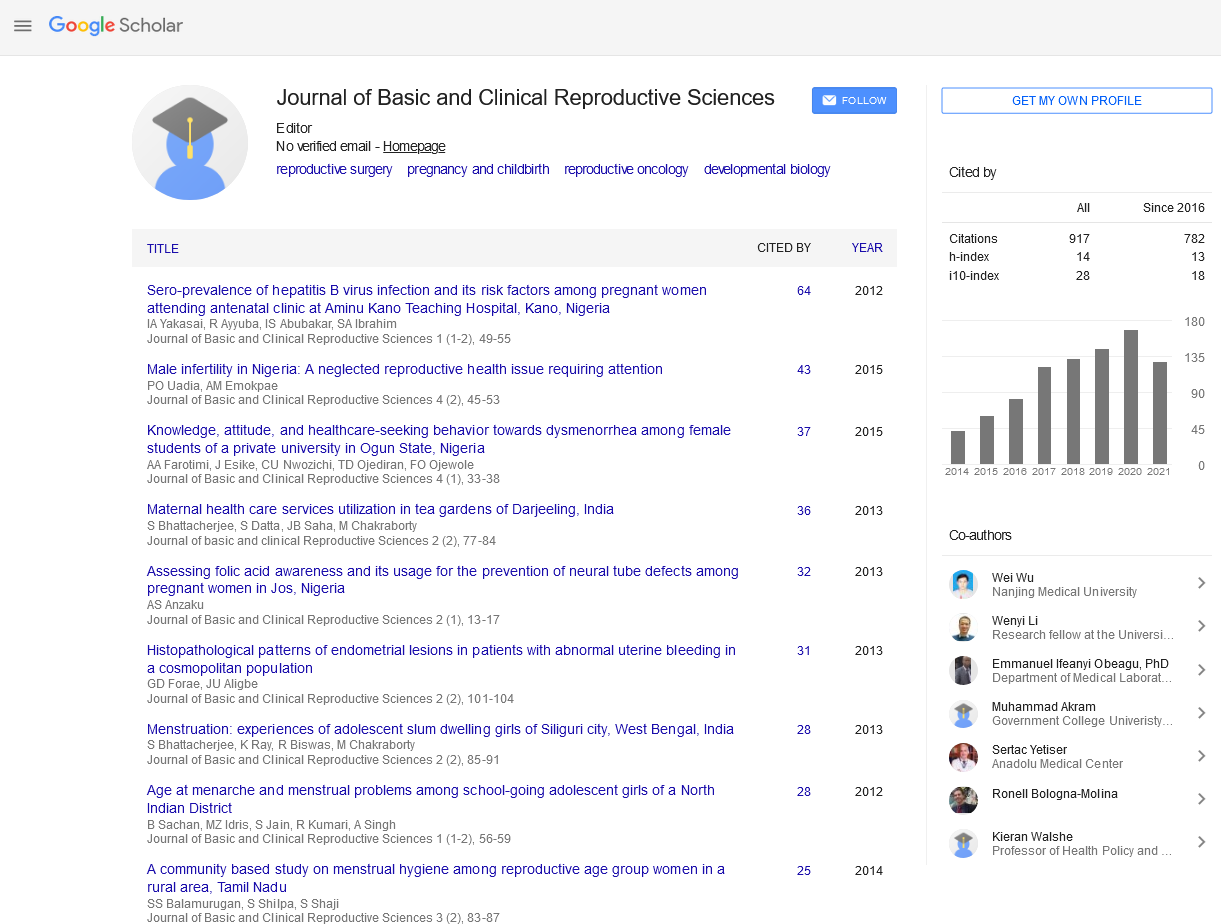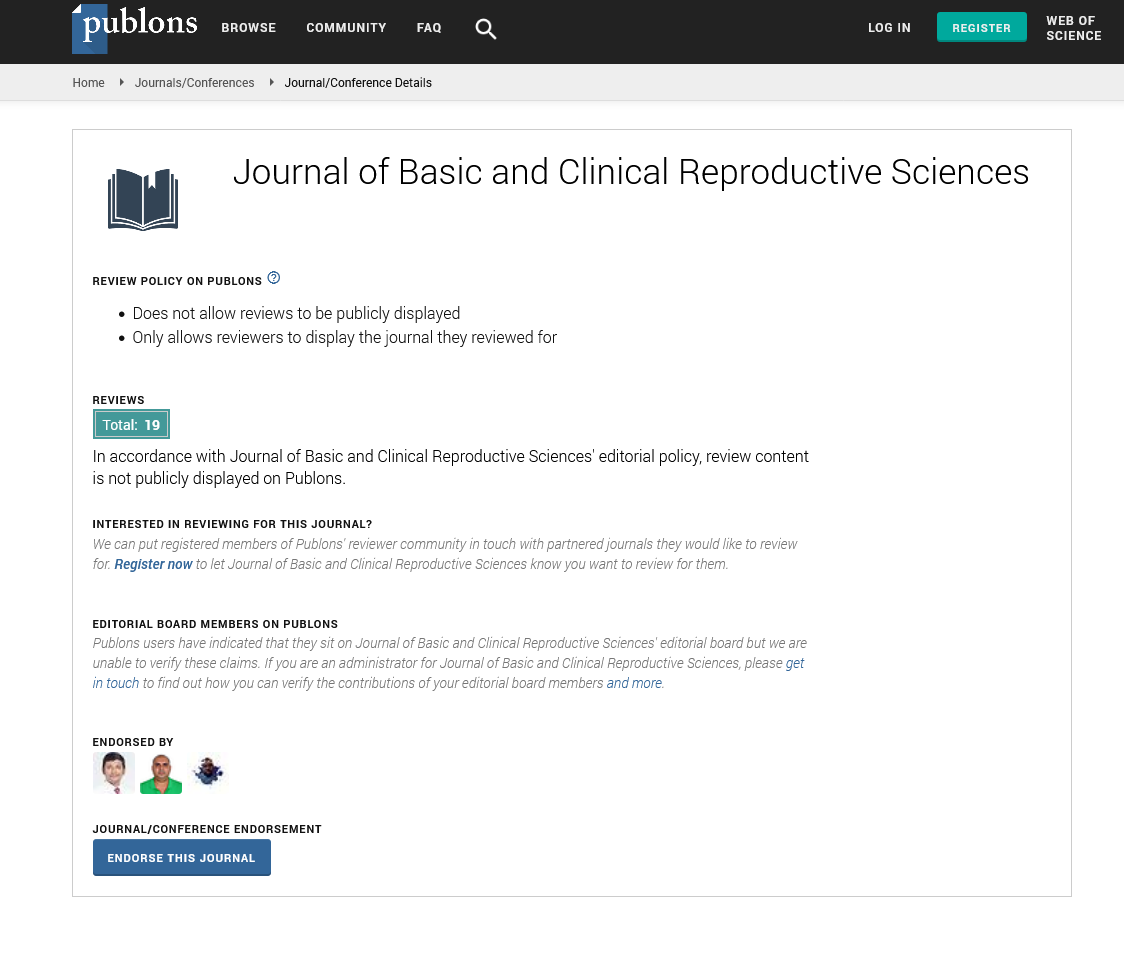Perspective - Journal of Basic and Clinical Reproductive Sciences (2023) Volume 12, Issue 3
An Overview on Testicular Torsion: Its Causes, Risk Factors and Prevention
Received: 24-May-2023, Manuscript No. JBCRS-23-102568; Editor assigned: 26-May-2023, Pre QC No. JBCRS-23-102568 (PQ); Reviewed: 09-Jun-2023 QC No. JBCRS-23-102568; Revised: 16-Jun-2023, Manuscript No. JBCRS-23-102568 (R); Published: 23-Jun-2023
This open-access article is distributed under the terms of the Creative Commons Attribution Non-Commercial License (CC BY-NC) (http://creativecommons.org/licenses/by-nc/4.0/), which permits reuse, distribution and reproduction of the article, provided that the original work is properly cited and the reuse is restricted to noncommercial purposes. For commercial reuse, contact reprints@pulsus.com
Description
Testicular torsion is a medical emergency that occurs when the spermatic cord, which supplies blood to the testicles, becomes twisted, leading to a potentially serious condition. This condition primarily affects males, often in their teenage years, but can occur at any age. Testicular torsion can cause severe pain, and if left untreated, it can result in the loss of the affected testicle. Immediate medical attention is necessary to prevent complications and preserve testicular function.
Testicular torsion
The testicles, located inside the scrotum, are responsible for producing sperm and the male hormone testosterone. They are attached to the body by the spermatic cord, which consists of blood vessels, nerves, and the vas deferens. In cases of testicular torsion, the testicle rotates, causing the twisting of the spermatic cord. This rotation reduces or completely blocks the blood flow to the affected testicle, leading to ischemia (lack of oxygen and nutrients) and, if not addressed promptly, tissue death.
Causes and risk factors
While testicular torsion can occur spontaneously, certain factors can increase the risk. Anatomical variations, such as a bell-clapper deformity, where the testicle is not securely attached to the scrotum, make a person more susceptible to torsion. Physical damage to the pelvic region, strenuous exercise, and past attacks of torsion are some additional risk factors for testicular torsion. It’s worth noting that testicular torsion can occur during sleep or even while sitting or standing still.
Symptoms and diagnosis
The most prominent symptom of testicular torsion is sudden, severe testicular pain. The pain may radiate to the lower abdomen or pelvic area. The affected testicle may appear enlarged, painful, and higher than usual in the scrotum. Prompt medical attention is essential, as early intervention increases the likelihood of saving the testicle. A healthcare professional will typically conduct a physical examination and may order diagnostic tests, such as a Doppler ultrasound, to confirm the diagnosis and assess blood flow to the testicle.
Treatment options
Immediate treatment is vital in cases of testicular torsion. The main goal is to restore blood flow to the affected testicle. In some cases, manual detorsion, where a healthcare professional manually rotates the testicle to undo the twist, can be attempted. However, surgical intervention is typically required to address the underlying issue and prevent future occurrences. This surgical procedure, called orchidopexy or orchiopexy, involves securing the testicle to the scrotum to prevent further twisting. In situations where the testicle has suffered irreversible damage, it may need to be removed (orchidectomy).
Complications and long-term outlook
Delayed diagnosis and treatment of testicular torsion can have serious consequences. If blood flow is not restored promptly, the affected testicle can undergo irreversible damage and atrophy. In such cases, removal of the testicle becomes necessary. Even with timely intervention, the remaining testicle may be at a slightly increased risk of torsion. However, the preservation of one healthy testicle is usually sufficient for normal hormone production and fertility.
Prevention and awareness
While testicular torsion cannot be entirely prevented, awareness of the condition and its risk factors can help individuals take precautions. Young males who have a history of testicular torsion or anatomical variations may benefit from discussing preventive measures with their healthcare providers. Vigorous physical activity involving the scrotum, such as certain sports, may warrant the use of supportive clothing. Prompt medical attention for any sudden or severe testicular pain is necessary to ensure timely treatment and prevent complications.
Conclusion
Testicular torsion is a painful and potentially serious condition that requires immediate medical attention. Recognizing the symptoms, understanding the risk factors, and seeking prompt treatment can significantly improve the outcome. Timely intervention is key to restoring blood flow, preserving testicular function, and preventing long-term complications. By raising awareness and promoting early detection, one can help safeguard the health and well-being of individuals affected by testicular torsion.


